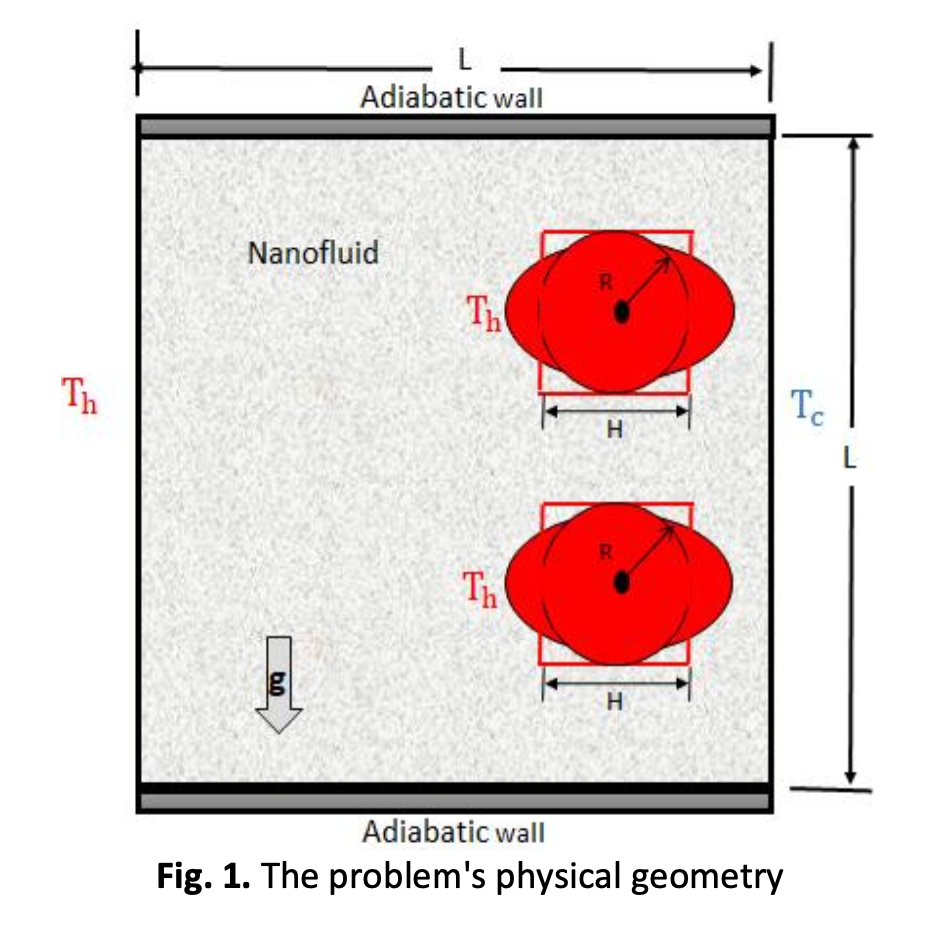An Analysis of How Different Forms of Heated Bodies Affect Thermal Conductivity Inside a Nanofluid Square Domain
DOI:
https://doi.org/10.37934/arfmts.98.1.105116Keywords:
Nanofluid, two thermal cylinders, natural convection, square enclosure, two ellipsesAbstract
Two thermal cylinders with varied shapes (circular (R = 0.15), square (L = 0.15), ellipse (Rx = 0.2, Ry = 0.15), and circular (R = 0.15) near the cold wall of the square enclosure where the (AR = 0.7) is explored numerically in the present study. The nanofluid is contained within the cavity (Al2O3). Left-side vertical wall and inner bodies are maintained at a fixed temperature (Th), while the right-side vertical wall is maintained at a cool temperature (Tc). Thermal insulation is used to insulate the upper and lower horizontal walls. This code is used the (technique of finite elements), which is utilized to resolve dimensionless equations in the COMSOL program. The basic parameters that were utilized in this paper where: the Rayleigh number (Ra), which ranged from 103 to 106; the percentage of solid volume (ϕ=0.06); and the aspect ratio (AR =0.7). The outcome demonstrates that: When the heated internal bodies are used in different forms, the effect of fluid movement will be different, and when the two inner bodies are combined, the highest stream function of up to 33 can be obtained. The isotherm line shows the clear and important effect of internal bodies in enhancing and improving heat transfer. For the two-square case, the average Nu was at its lowest point. While the highest Nu was for two – the ellipse case followed by the cylinder – the ellipse and the two circular cylinders.
Downloads
































